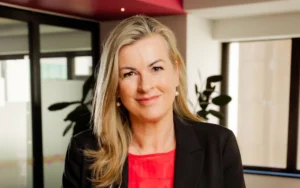Looking under the ETF bonnet
Machines and the Mind
Around 70%-80% of equity market volume is driven by algorithmic trading. There are a host of actors in this process, from hedge funds, exchange-traded funds (ETFs) and commodity trading advisers (CTAs). It also includes fundamental investors that refine their positions, for example, “percentage of volume” (POV) execution that matches ‘buy’ or ‘sell’ with the volume being traded in the market. On the other side is high frequency trading (HFT), generally viewed with suspicion and disapproval by distorting price and volume signals.
One well-studied outcome has been the rise in trading at the close. Market-on close (MOC) are trades that must be settled at the close (compared to limit-on close) and represent 13% of global volume, double that of five years ago. It will come as no surprise that there are those that look to take advantage of investors who believe that markets reflect the best price.
While ETF providers proclaim that their influence is benign, there is little doubt that ETF creation and redemption at end-of-day net asset value (NAV) is part of the story. Given the increasing role of ETFs in portfolios, it becomes more important to appreciate the nuances that may detract from performance.
On a parallel topic is the differentiation between ETFs that superficially appear to give the same exposure. Not only are there compositional distinctions, but also differences in how they are constructed. By way of example, the S&P index for emerging markets has 691 holdings while the FTSE version has 4,100. Naturally, therefore, the sector, country and stock weights will vary.
A US index has the same potential features. The inclusion of Tesla in the S&P 500 is a recent example of how a rules-based formula combined with a level of human intervention by the S&P committee creates its own dust storm. On one side was a debate on whether Tesla made the grade with the required four quarters of profit, while its weight in the index provided a feast of potential for traders. Active managers that are confined by tight restrictions on non-index stocks are in a pickle versus those that exercised discretion.
The reduction in the number of listed stocks in developed markets, with the US now at half of what there was 20 years ago, has contributed to higher weights in big-cap stocks, exacerbated by the FAAMG phenomenon. The MSCI has raised this issue, illustrating that a 10% fall in these five stocks (and no change in others) would result in a 7.8% fall in the MSCI US index (yet another one).
Most indices are based on stock numbers such as S&P 500, Stoxx 600. A few, such as the CRSP (Center for Research in Security Prices) used by Vanguard, are based on market cap. The VTS (US large-cap) ETF comprises 85% of total US market cap rather than a set number of stocks. Meantime the Nasdaq 100 index has an insomnia-inducing reweighting process and excludes any stock designated as a ‘financial.’
For many this sounds like a big yawn, yet to an investor using ETFs for long-term exposure, it will matter. The narrower the index, the greater the possibility of unintended exposure. Overlap and absences are frequent, while diversification is more than often lost.
We spend an inordinate amount of time on active managers yet, without much thought, add-in an indexed exposure. It is likely time to reconsider which to use and why, while also paying attention to pricing discrepancies.











